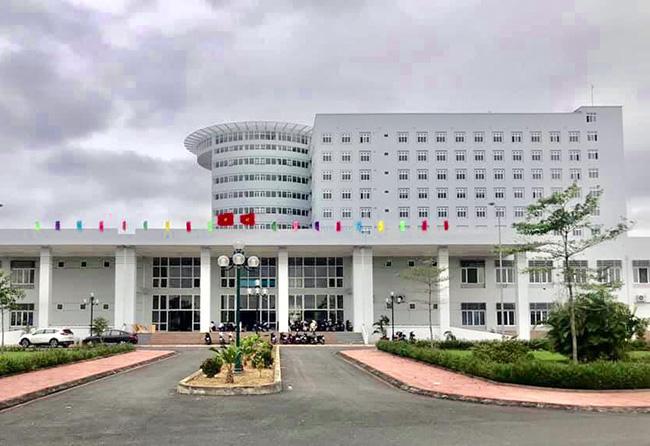Exploring Sapa: A Complete Guide to Vietnam’s Enchanting Mountain Town
Welcome to our comprehensive guide to Sapa, a mesmerizing mountain town nestled in the picturesque landscapes of northern Vietnam. In this article, we will take you on a virtual journey to explore everything there is to know about Sapa, from its stunning natural beauty and rich cultural heritage to its top attractions, outdoor activities, local cuisine, practical tips, and more. Whether you’re a nature enthusiast, adventure seeker, or cultural explorer, Sapa offers a wealth of experiences that will captivate your senses and leave you with unforgettable memories. So, grab a cup of tea, sit back, and let us be your virtual guide to this enchanting destination. Overview of Sapa Location and Geography Sapa is located in the Lao Cai Province of northern Vietnam, approximately 350 kilometres northwest of Hanoi. Situated near the border with China, the town is perched at an elevation of around 1,600 meters (5,200 feet) above sea level. Its strategic location offers mesmerizing views of the Hoang Lien Son mountain range, including the iconic Fansipan, the highest peak in Indochina. Climate and Best Time to Visit Sapa experiences a temperate climate with distinct seasons. The region enjoys a cool climate throughout the year, but temperatures can vary significantly between seasons. The best time to visit Sapa is from March to May and September to November when the weather is mild, and the landscapes are lush. These months offer pleasant temperatures, clear skies, and an opportunity to witness the terraced rice fields in all their glory. Cultural Diversity Sapa is renowned for its rich cultural diversity, attracting visitors with its vibrant ethnic minority communities. The major ethnic groups in the region include the Hmong, Dao, Tay, Giay, and Xa Pho. Each group has its unique traditions, customs, language, and attire, making Sapa a melting pot of diverse cultures. Travellers have the opportunity to immerse themselves in the traditions and daily lives of these ethnic communities, gaining insights into their customs, festivals, handicrafts, and culinary practices. Top Attractions in Sapa Fansipan Mountain Standing tall at 3,143 meters (10,312 feet) above sea level, Fansipan is often referred to as the “Roof of Indochina.” This majestic mountain offers breathtaking panoramic views of the surrounding landscapes, including Sapa’s lush valleys and rolling hills. Fansipan is a haven for trekking enthusiasts, with two popular routes to choose from: the Tram Ton Pass and the Cat Cat Village trail. Sapa Town Sapa Town serves as the gateway to the breathtaking landscapes and cultural treasures of the region. With its unique blend of French colonial architecture and indigenous influences, the town exudes a distinct charm that captivates visitors worldwide. Cat Cat Village: Nestled at the foot of Fansipan Mountain, Cat Cat Village is a well-known destination that offers a glimpse into the traditional Hmong culture. As you venture into this charming village, you’ll find yourself immersed in a world of vibrant traditions, beautiful landscapes, and intricate handicrafts. Lao Chai and Ta Van Villages Situated in the Muong Hoa Valley, Lao Chai and Ta Van Villages are renowned for their stunning terraced rice fields and the opportunity to immerse yourself in the cultural tapestry of Sapa. Trekking Routes Embarking on a trek to Lao Chai and Ta Van Villages allows you to witness the mesmerizing beauty of Sapa’s terraced rice fields up close. These picturesque landscapes, sculpted by the hands of local farmers, create a captivating tapestry of vibrant hues that change with the seasons. The trekking routes wind through these terraced fields, providing breathtaking views and encounters with local ethnic communities. Cultural Exchange and Local Cuisine As you journey through Lao Chai and Ta Van Villages, you’ll have the chance to engage in cultural exchanges with the local communities, gaining insights into their way of life and customs. Embrace the warmth and hospitality of the villagers as they welcome you into their homes and share stories of their traditions. Participate in traditional activities, such as rice planting or basket weaving, and immerse yourself in the rhythm of their daily routines. Savour the delicious flavours of home-cooked meals prepared by your gracious hosts. Indulge in local delicacies, such as “thang co” (horse meat soup), “com lam” (bamboo rice), and various dishes made with fresh, organic ingredients sourced from the surrounding fields. This culinary journey allows you to experience the authentic flavours of Sapa and appreciate the connection between the land, the people, and their food. Outdoor Activities in Sapa Trekking and Hiking Muong Hoa Valley The picturesque Muong Hoa Valley is a must-visit destination for trekking enthusiasts. Known for its breathtaking landscapes, terraced rice fields, and ethnic minority villages, this valley offers a captivating glimpse into the beauty of Sapa. Silver Waterfall and Heaven’s Gate For those seeking natural beauty and stunning viewpoints, a visit to the Silver Waterfall and Heaven’s Gate is a must. The Silver Waterfall cascades down from a height, surrounded by lush greenery and rocky cliffs. Take a refreshing break, breathe in the fresh mountain air, and let the sound of the cascading water rejuvenate your senses. Adjacent to the waterfall is the Heaven’s Gate viewpoint, offering panoramic vistas of the majestic mountains and valleys of Sapa. Capture the awe-inspiring landscapes through your lens or simply savor the moment in this serene and breathtaking setting. Cycling and Motorbiking Sapa’s scenic routes and picturesque landscapes make it an ideal destination for cycling enthusiasts. One recommended route is the journey from Sapa to Ma Tra and Ta Phin villages. Pedal through the rolling hills, terraced rice fields, and charming ethnic minority communities. Along the way, immerse yourself in the natural beauty and embrace the tranquillity of the surroundings. Bicycle rental services are available in Sapa town, allowing you to easily access a suitable bike for your adventure. When cycling in Sapa, it is essential to prioritize safety. Wear appropriate protective gear, including helmets, and be cautious of the challenging terrains and varying weather conditions. Stay hydrated and be respectful of local traffic rules. As you explore the region on two wheels, take your … Read more





